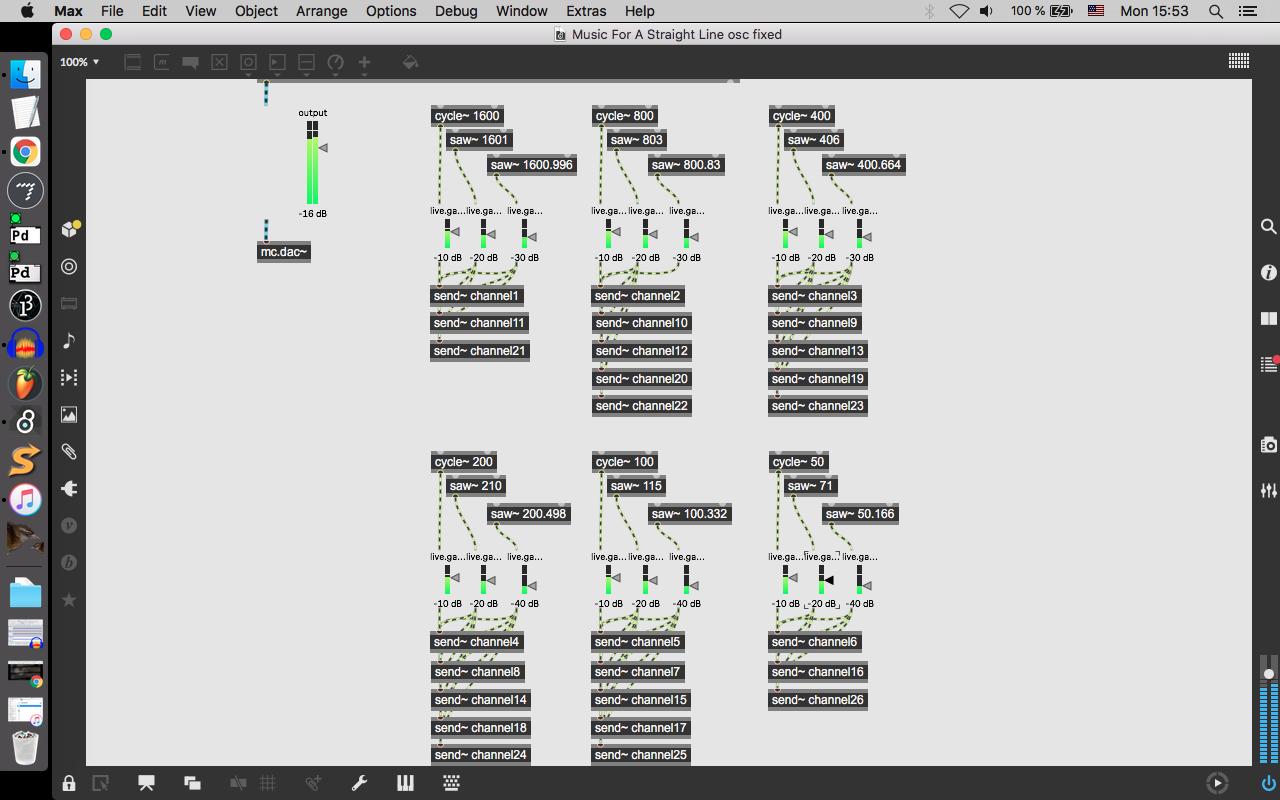Music For A Straight Line is a relativistic and interactive aural composition, comprised and composed of interwoven standing waves. To be played into an open space via a speaker (or stereo pair), the piece’s standing waves and sound sources (SPAT5) are all aligned in one straight line. The listener may move to and from the sound source, in a straight line, to move through the physical standing waves of the piece. As the tones are harmonically interwoven, the listener is able to move through various octaves and spatially oriented polyrhythmic acoustic beats. This piece and its structural arc are wholly dependent upon the subjective listener, their personal experience and physical movement through space and the physical piece itself.
(This piece is to be played into an open space that allows for physical movement.)
Impetus:
This project draws inspiration from Alvin Lucier’s 1977 installation “Music on a Long Thin Wire”, in which Lucier created an extremely sensitive, yet balanced, feedback loop between an extraordinarily long length of wire and a stereo speaker system. To prompt the generative loop, a sinewave generator was introduced to the speakers’ amplifiers, whose signals in turn were picked up by a series of microphones and fed back into the system. This set up would allow for a vast array of sonic phenomena, including frequency shifts or slides and audible acoustic beating.
Process:
To keep the math simple for this piece, I chose to simply follow a 2:1 ratio, when selecting frequencies for “the line”. Additionally, I wanted to make sure the line itself was long enough for a series of physical repetitions, so I decided to give the line 26 sources, in MAX/MSP’s SPAT5 interface. The first round of tones and sources look like this:
· 50Hz (sent to channels 6,16, and 26) (mathematical and musical tonic)
· 100Hz (sent to channels 5,7,15,17 and 25)
· 200Hz (sent to channels 5,8,14,18 and 24)
· 400Hz (sent to channels 3,9,13,19 and 23)
· 800Hz (sent to channels 2,10,12,20 and 22)
· 1600Hz (sent to channels 1,11 and 21)
I decided then that I wanted to add acoustic beats. I added one new ~cycle object to the patch’s mix, at a diminished volume:
· 50Hz + 71Hz (sent to channels 6,16, and 26)
· 100Hz + 115Hz (sent to channels 5,7,15,17 and 25)
· 200Hz + 210Hz (sent to channels 5,8,14,18 and 24)
· 400Hz + 406Hz (sent to channels 3,9,13,19 and 23)
· 800Hz + 803Hz (sent to channels 2,10,12,20 and 22)
· 1600Hz + 1601Hz (sent to channels 1,11 and 21)
Lastly, I added a round of ~phasor saw-wave generators, for stronger harmonics and (perhaps) some objectivity. I toyed with the idea of implementing decimal beats, for an awfully slow cycle. Here’s that:
· 50Hz + 71Hz + saw50.166Hz (sent to channels 6,16, and 26)
· 100Hz + 115Hz + saw100.332Hz (sent to channels 5,7,15,17 and 25)
· 200Hz + 210Hz + saw200.498Hz (sent to channels 5,8,14,18 and 24)
· 400Hz + 406Hz + saw400.664Hz (sent to channels 3,9,13,19 and 23)
· 800Hz + 803Hz + saw800.830Hz (sent to channels 2,10,12,20 and 22)
· 1600Hz + 1601Hz + saw1600.996Hz (sent to channels 1,11 and 21)


